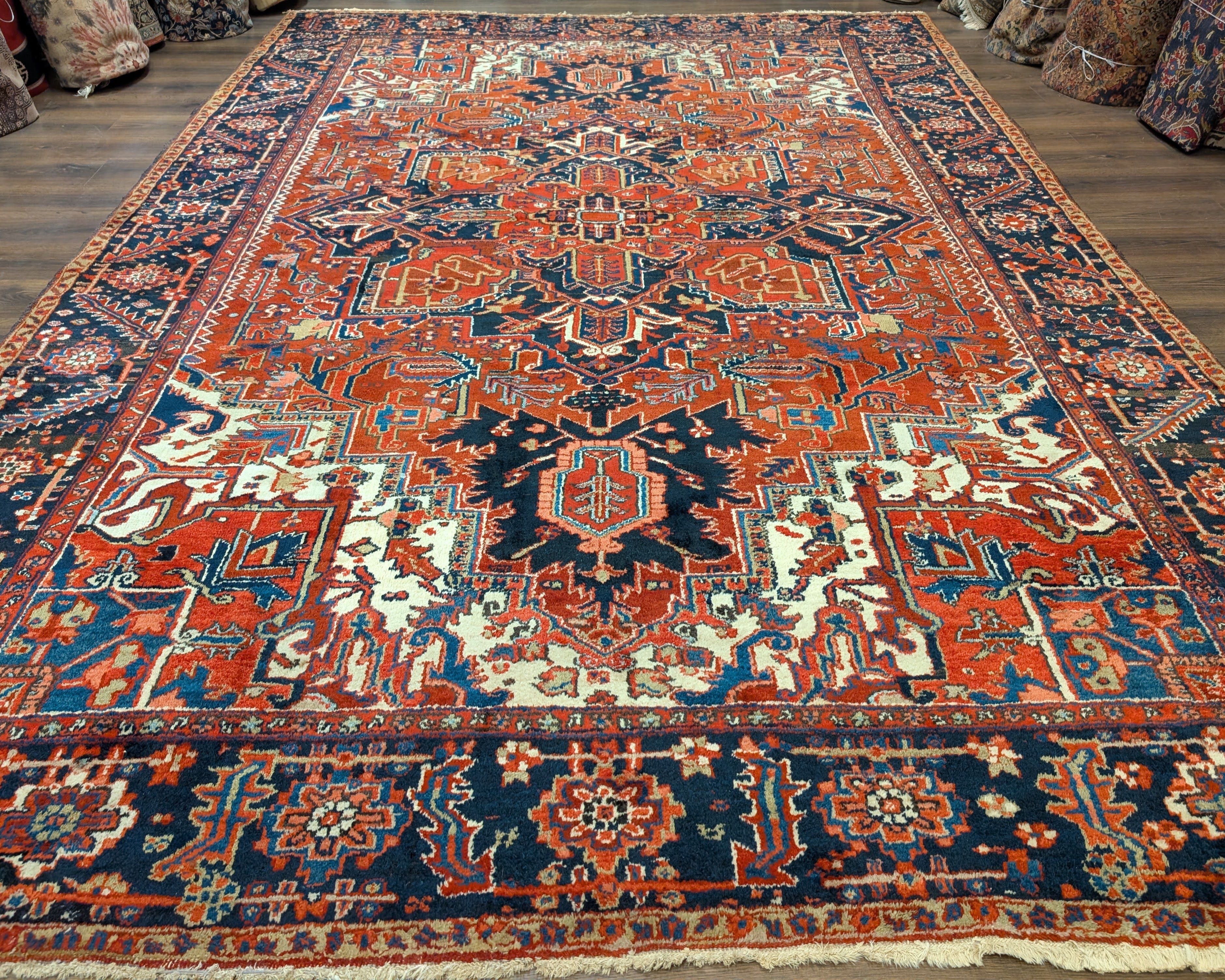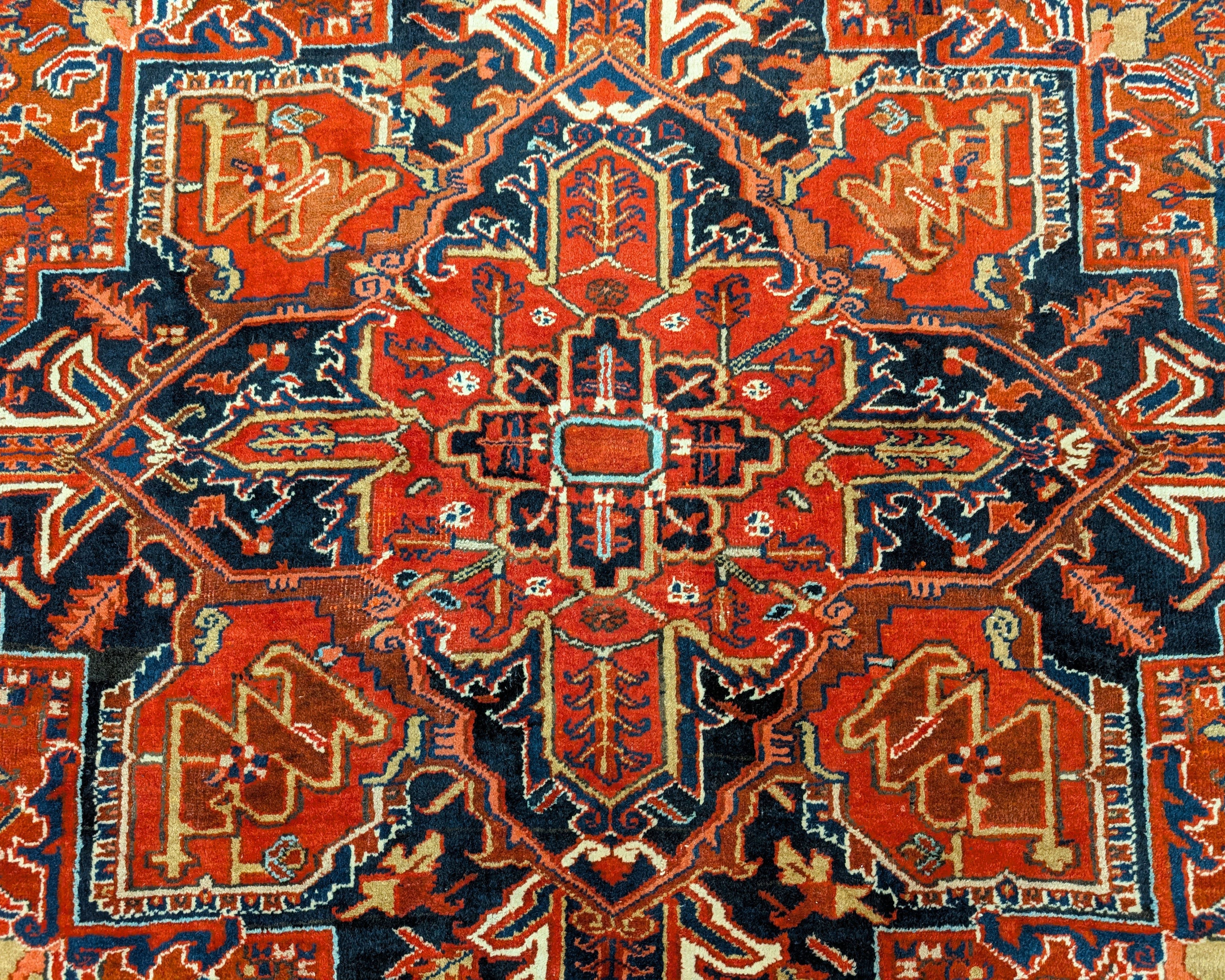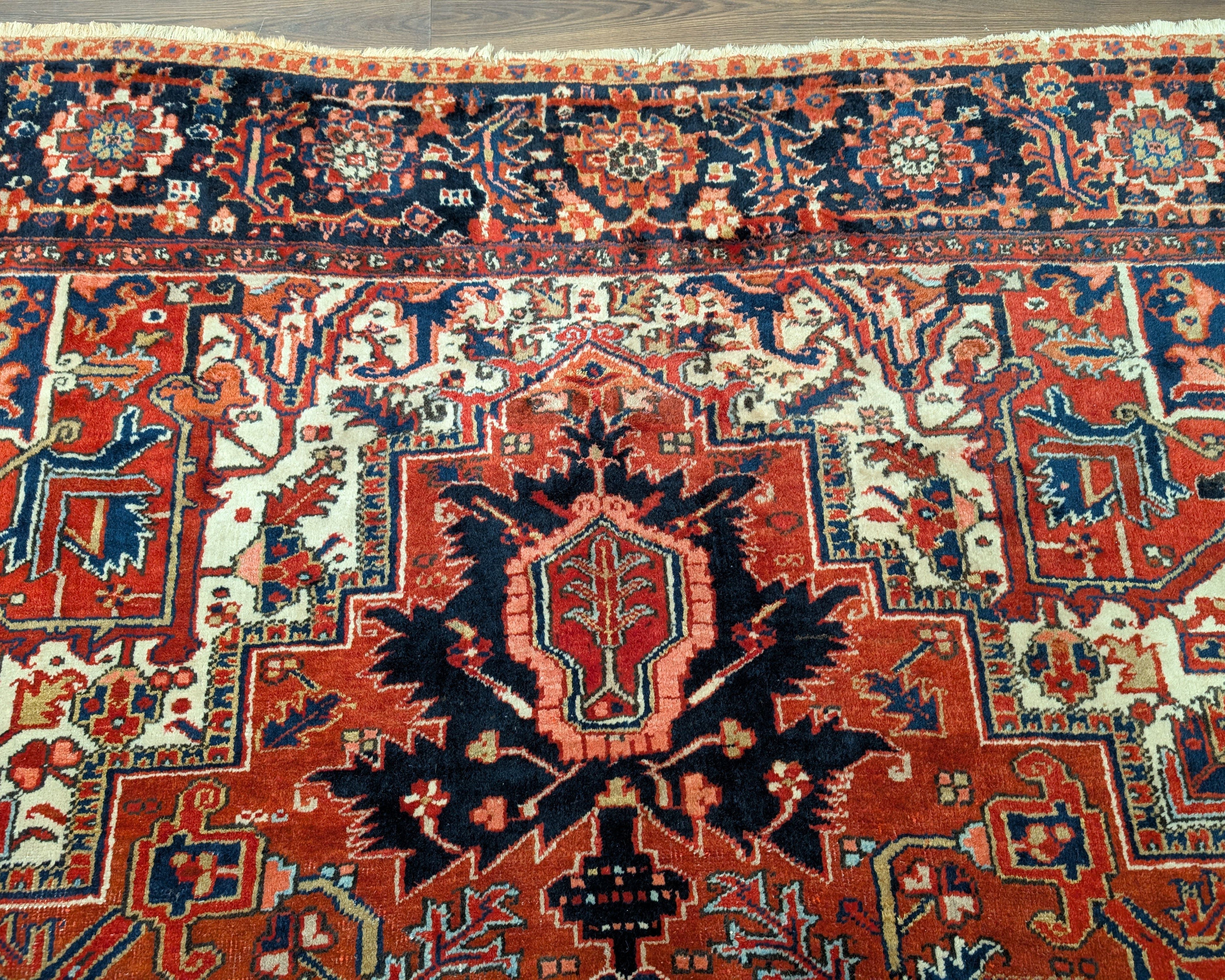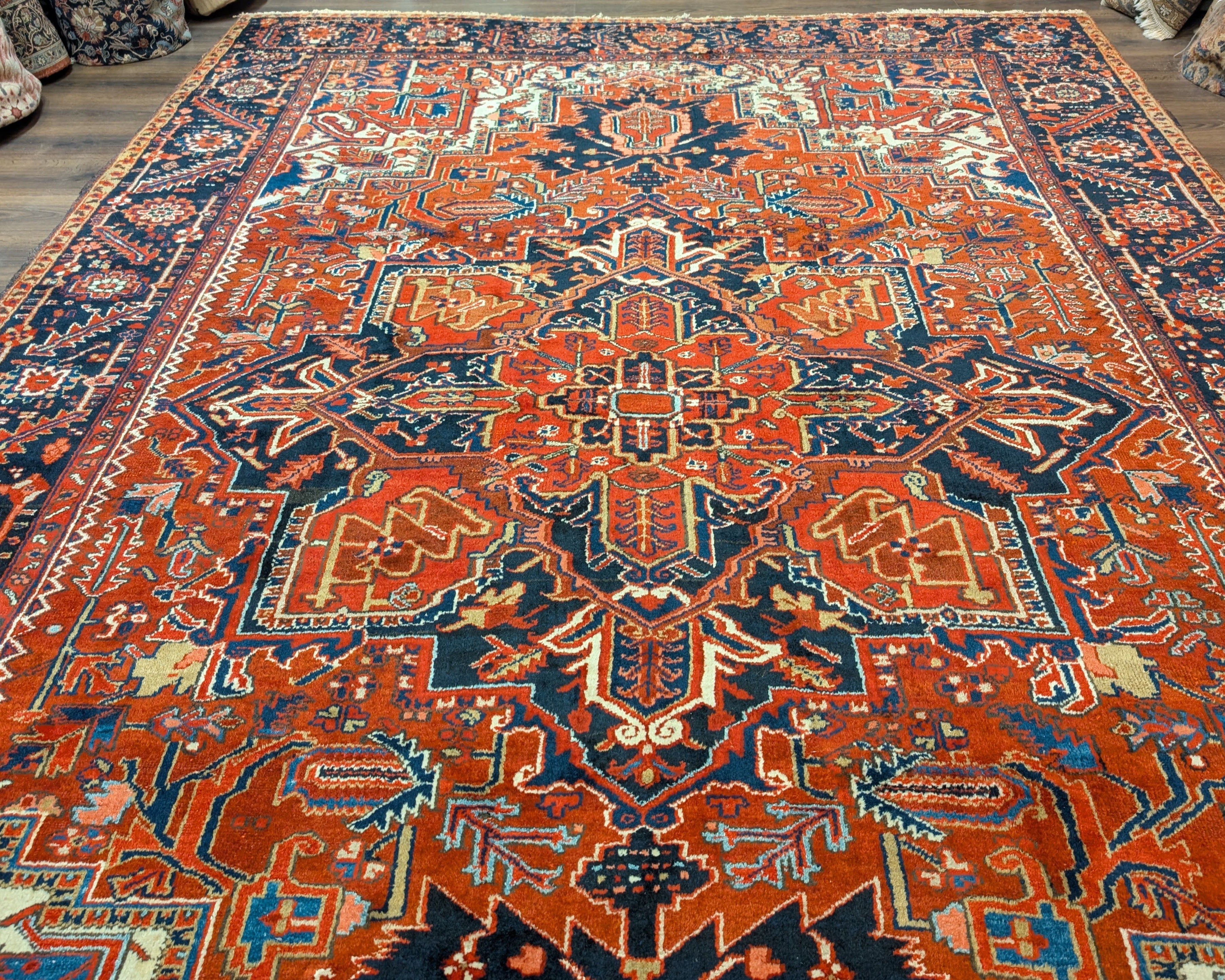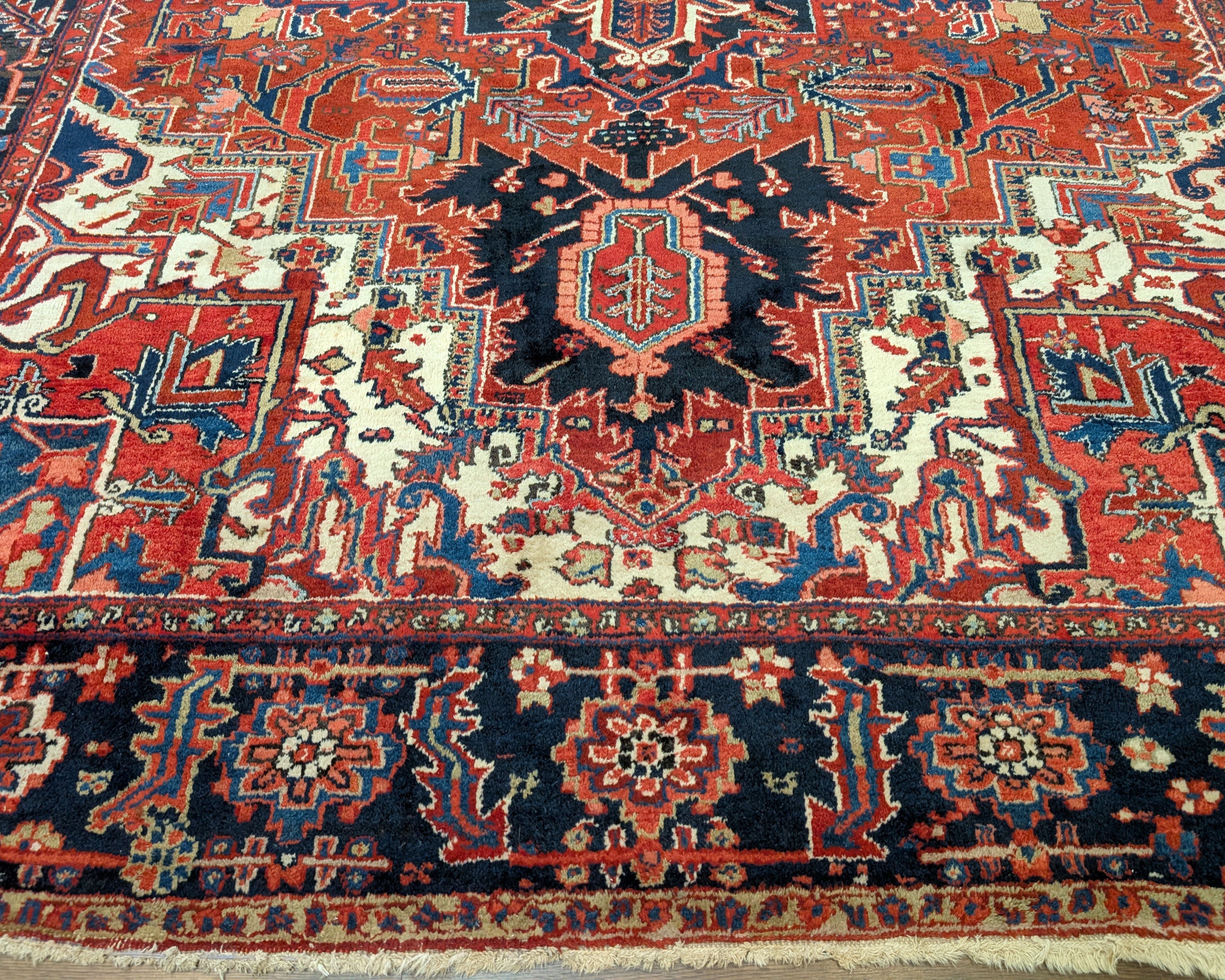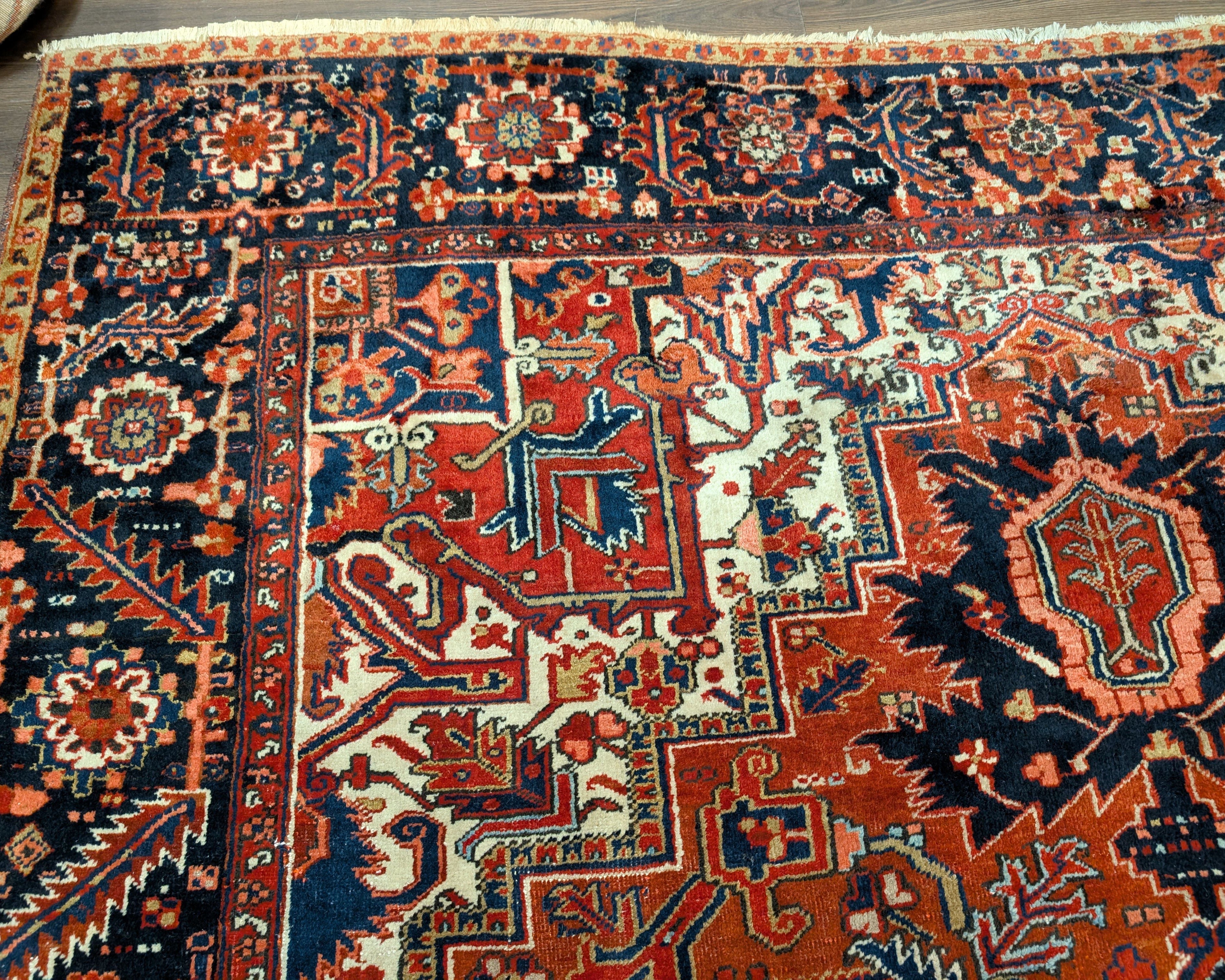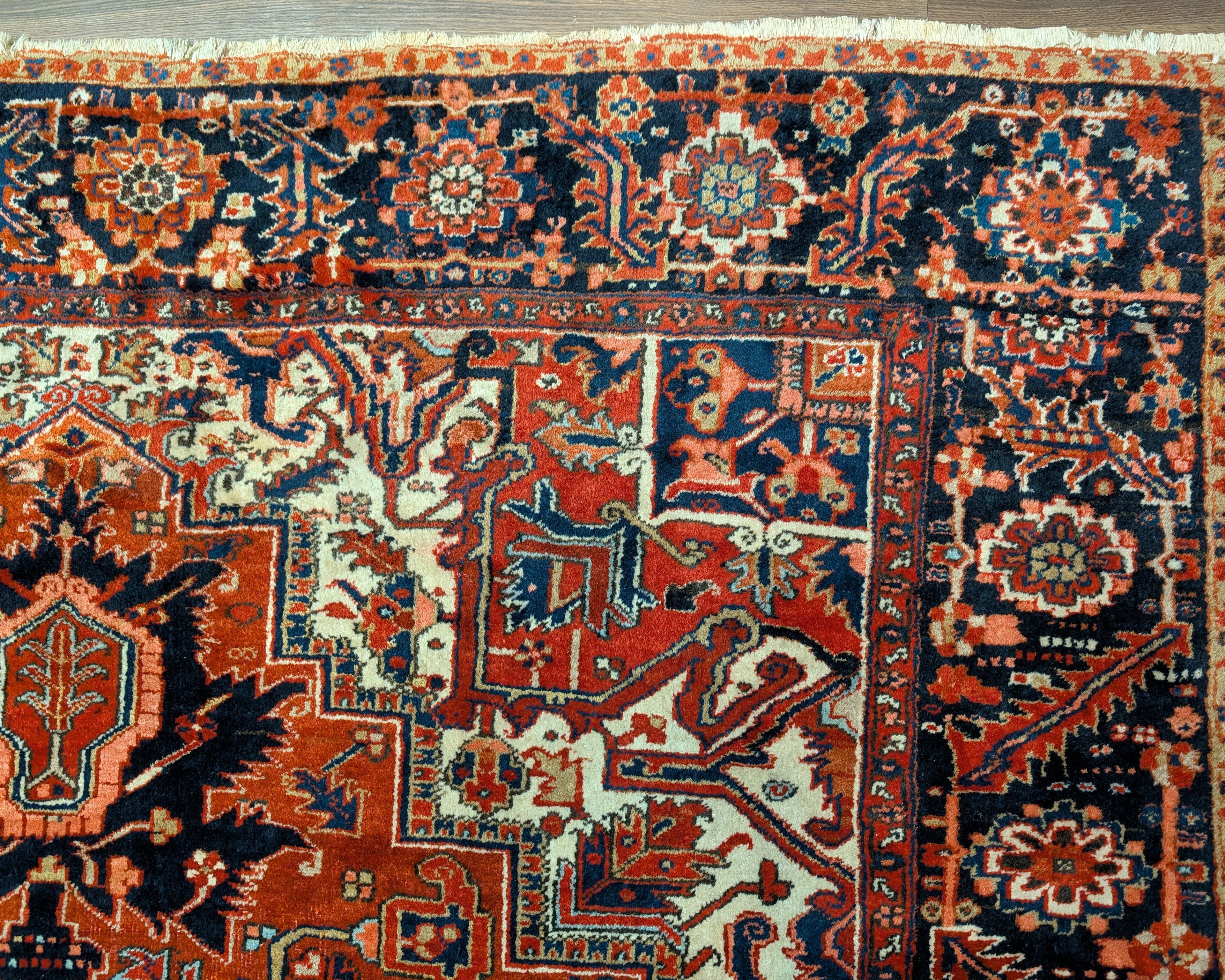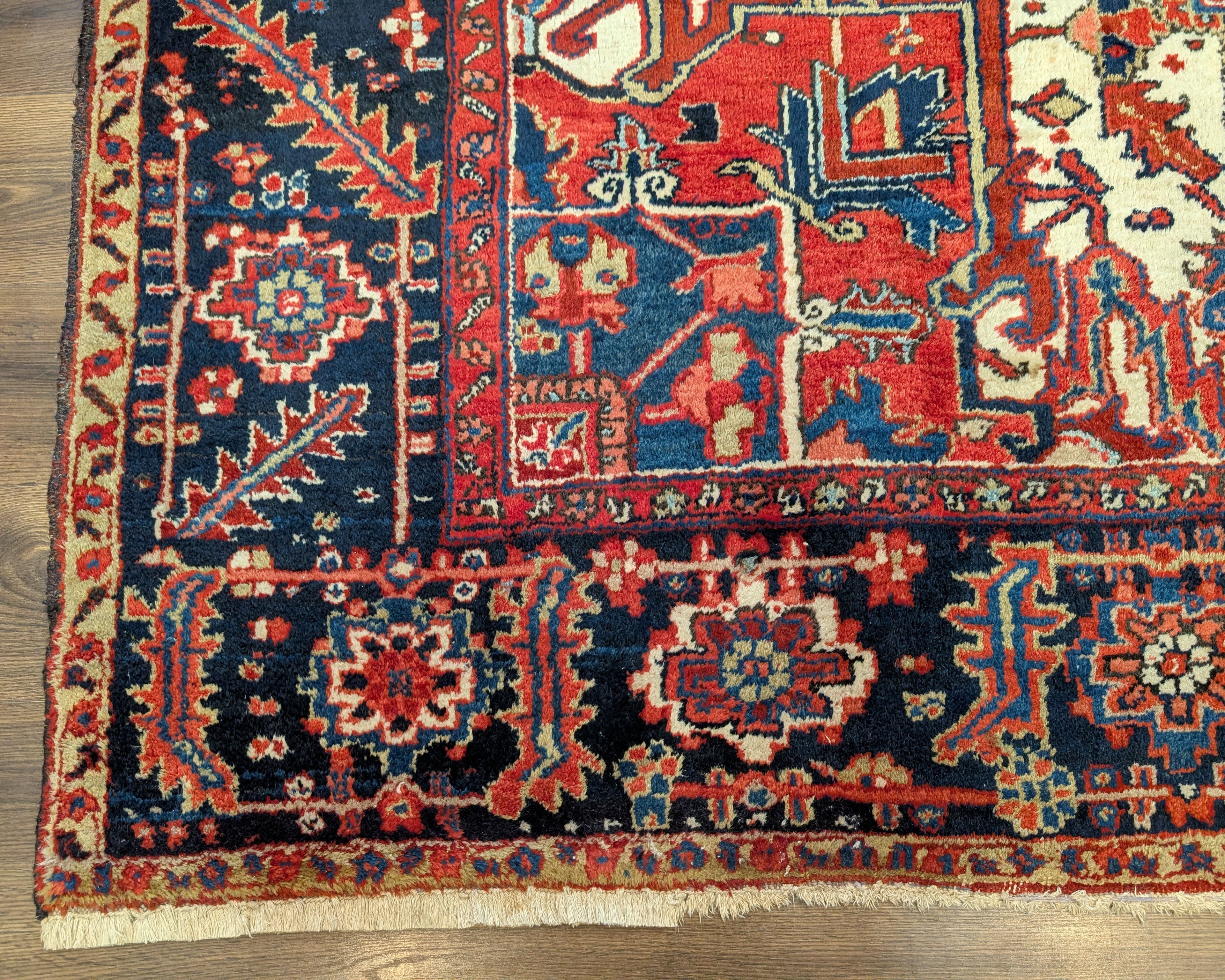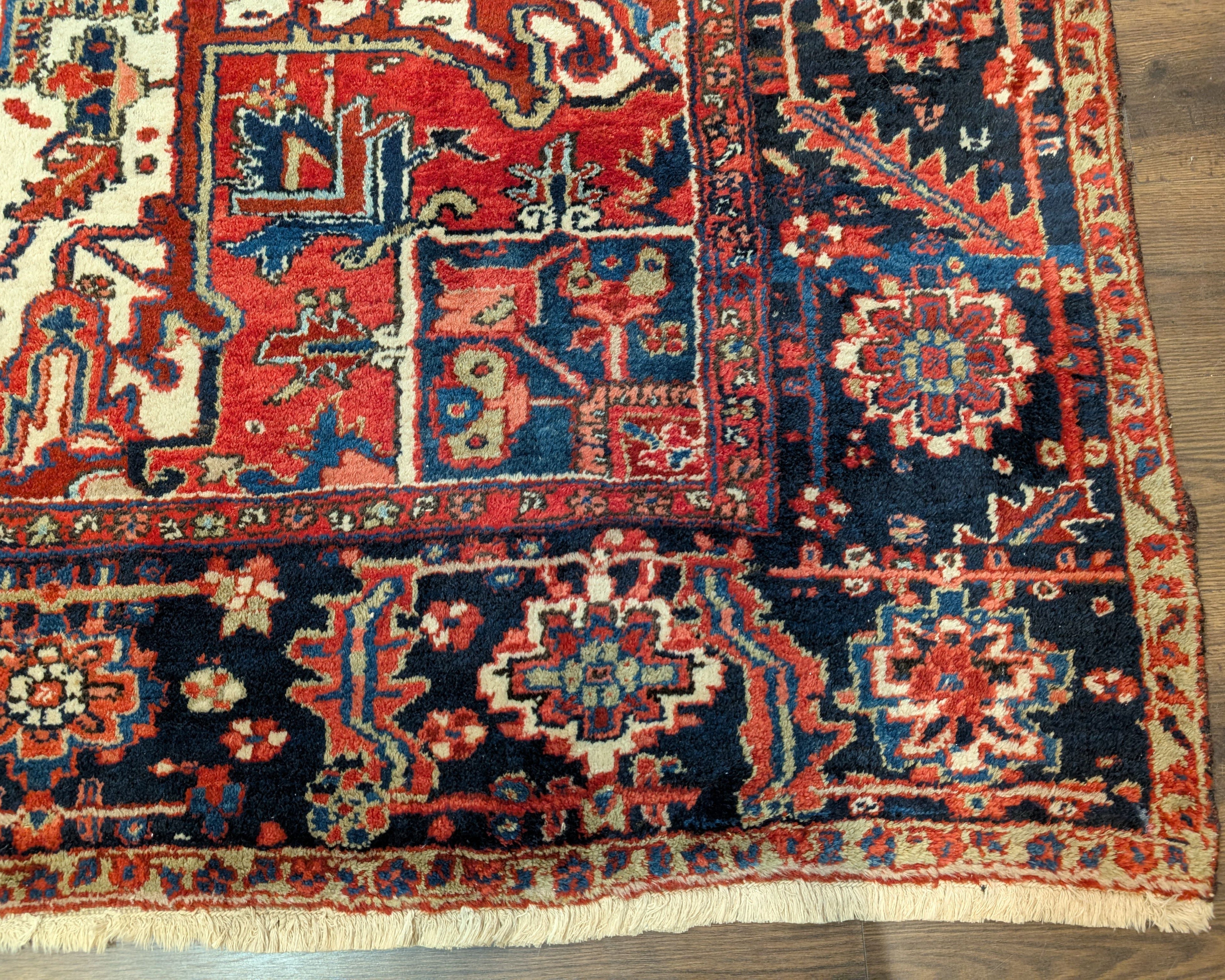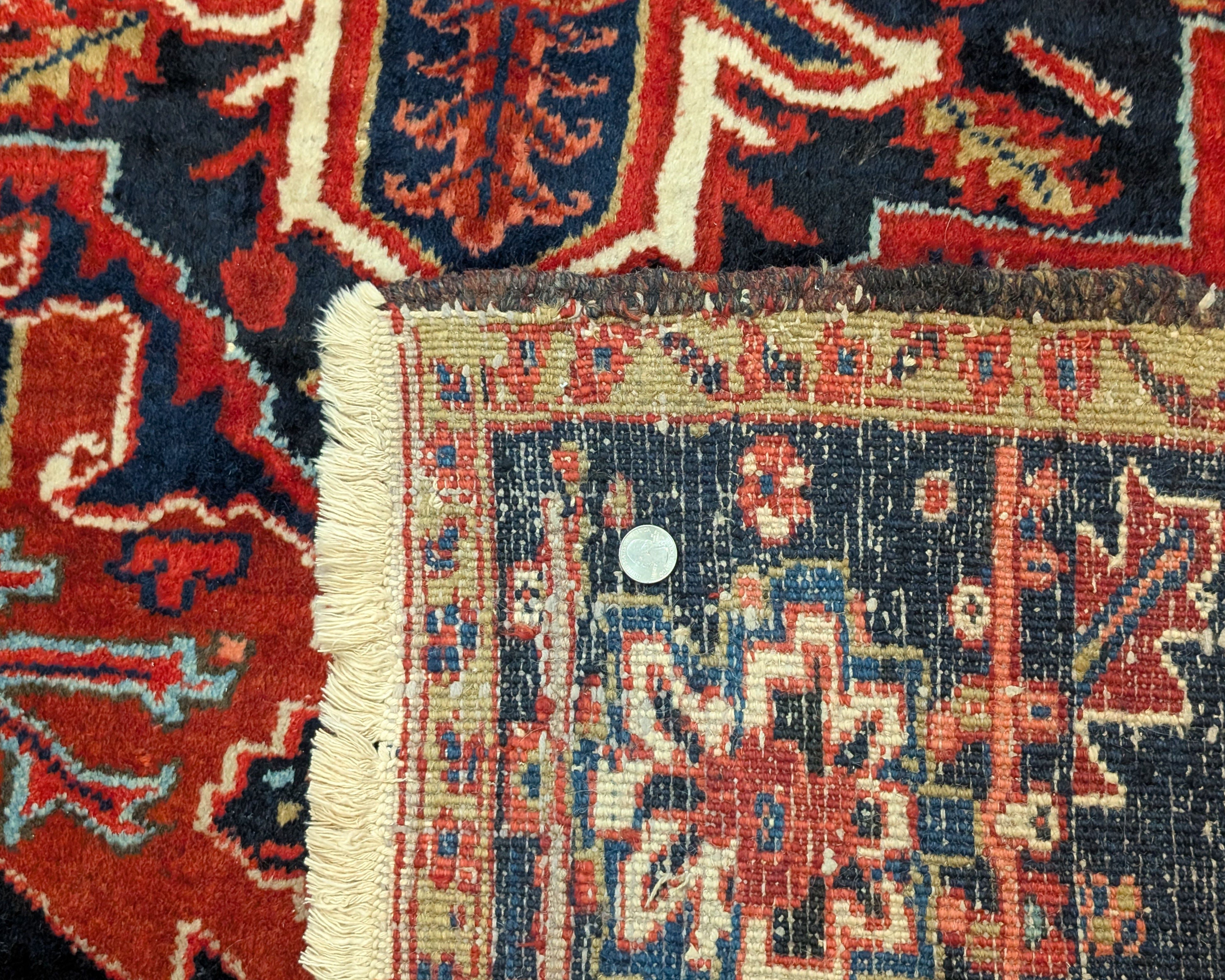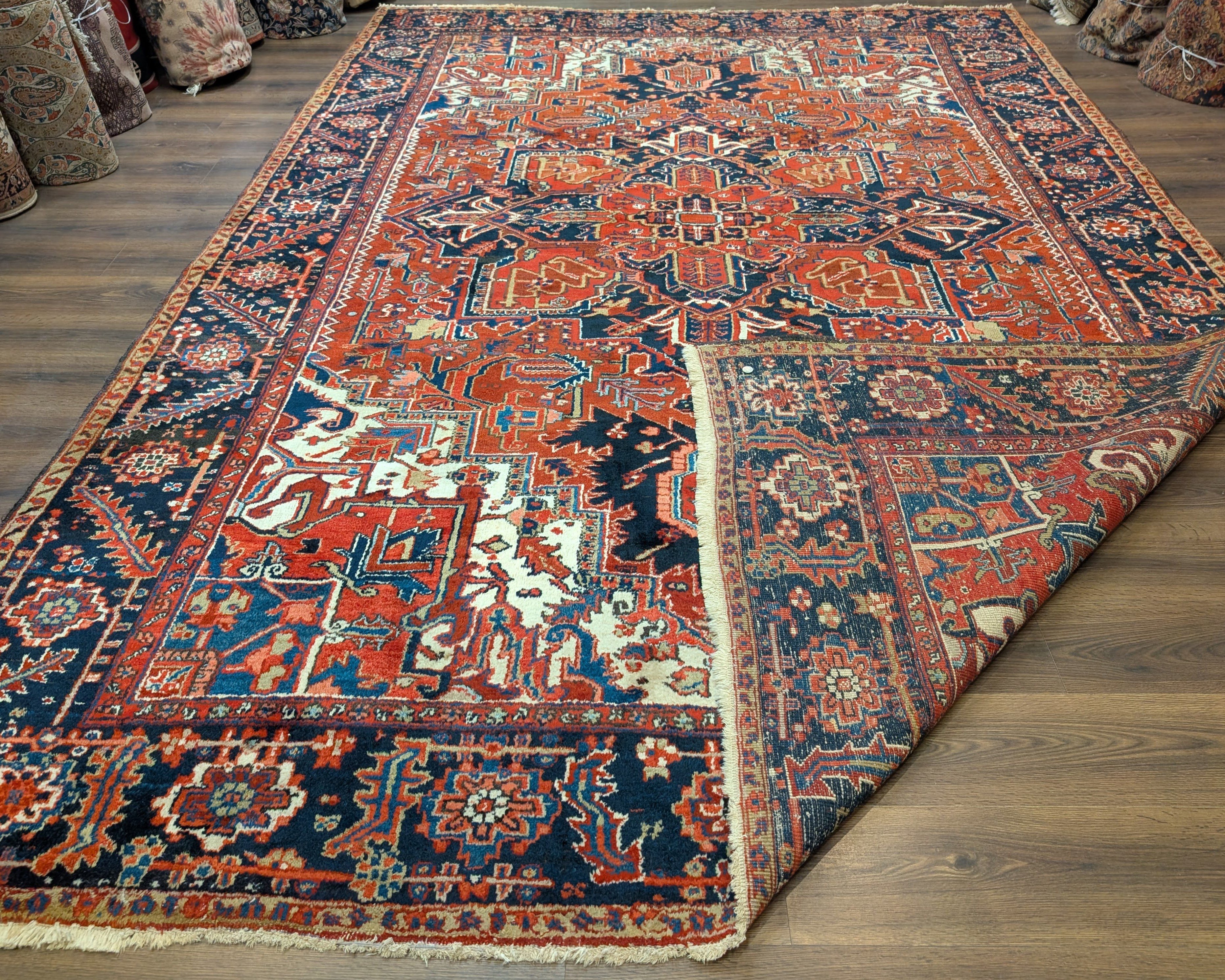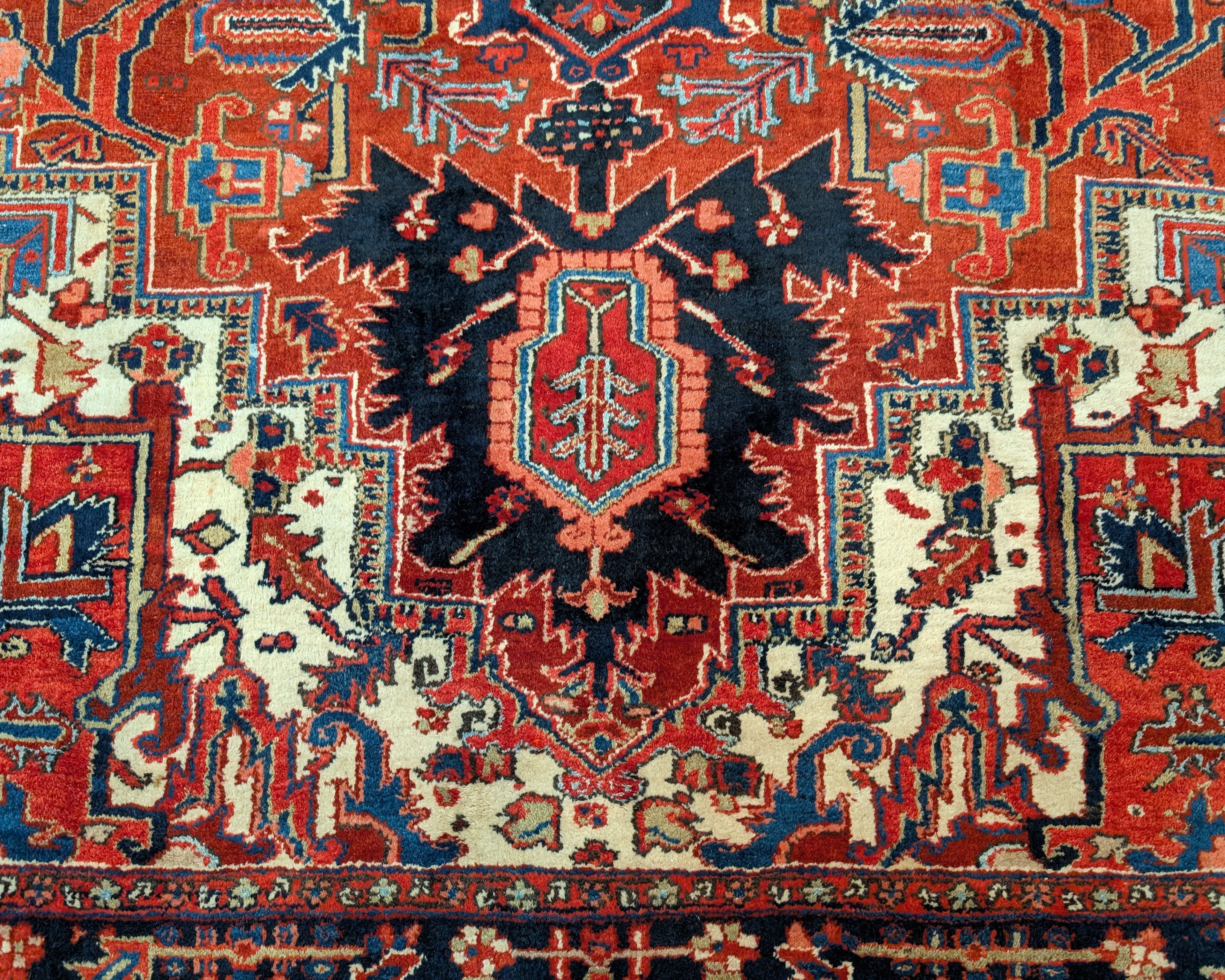About Heriz Rugs
Heriz rugs originate from the town of Heriz in northwest Persia, near the slopes of Mount Sabalan. Woven by Azerbaijani artisans, these rugs reflect a blend of Persian urban influences and regional village traditions. What sets Heriz rugs apart is their architectural strength—both in pattern and construction. They are woven with a particularly strong wool, often attributed to the mineral-rich water in the region, which is believed to give the wool added resilience.
Design Characteristics
Heriz rugs are instantly recognizable by their commanding central medallions set against a backdrop of angular floral motifs and crisp geometry. Unlike the curvilinear finesse seen in city rugs like Isfahan or Nain, Heriz rugs are boldly graphic, favoring stylized leaves, rosettes, and jagged vine work. The corner spandrels typically echo the medallion design, creating a structured visual harmony.
Color palettes often include rust red, ivory, indigo, pale blue, ochre, and black. Older pieces may feature softer hues due to natural dyes, while some mid-century versions embrace saturated tones.
Weaving Technique & Durability
Most Heriz rugs are hand-knotted with a Turkish (symmetric) knot and feature a cotton foundation. Knot density tends to be medium—around 30–100 KPSI—but their durability stems more from the quality of the wool than the fineness of the weave. These rugs are known to last for generations, making them a favorite for high-traffic areas like dining rooms and living rooms.
Subtypes and Related Regional Rugs
While “Heriz” is the general category, neighboring villages such as Serapi, Gorevan, and Bakshaish produce rugs with slight variations.
- Serapi rugs, often earlier and more finely woven, are prized for their refinement.
- Gorevan rugs have a slightly looser weave and are more rustic.
- Bakshaish rugs, older and rarer, lean more abstract with tribal influences.
FAQ About Heriz Rugs
Where can I find authentic Perisan Heriz carpets for sale online?
You can find a curated selection of genuine Heriz rugs at specialty retailers like Jewel Rugs, which focuses on vintage and antique handmade Persian rugs. For those looking for an authentic Persian carpet, be cautious of reproductions labeled "Heriz-style" that are not actually made in the region.
Are Heriz rugs suitable for high-traffic areas?
Yes. The thick wool and sturdy weave of Heriz rugs make them ideal for areas with heavy foot traffic. Their bold patterns also help conceal minor wear or stains over time.
What is the difference between a Heriz and a Serapi rug?
Heriz and Serapi rugs come from the same region, but Serapi rugs are typically older, dating from the late 19th to early 20th century. They have finer weaves, more open and spacious layouts, and often feature more subdued natural dyes. Heriz rugs, by contrast, are generally bolder, denser in pattern, and more coarsely woven. Serapis are often considered the refined forerunners to Heriz rugs.
What is the difference between Heriz, Serapi, Gorevan, and Bakshaish carpets?
These rugs originate from the Heriz district but vary in style and age:
- Heriz: Sturdy, bold geometric patterns with medium knot density.
- Serapi: Older and more finely woven with elegant spacing and softer colors.
- Gorevan: A regional cousin to Heriz, generally coarser and more rustic.
- Bakshaish: Tribal and abstract, often older and with looser, more artistic compositions.
How can you identify a Heriz rug?
Look for a large central medallion surrounded by angular, stepped floral motifs and corner spandrels that mirror the medallion. The overall layout tends to be highly structured and symmetrical. Colors often include rust red, ivory, deep blue, and touches of pale green or ochre. The wool is thick and the weave uses a Turkish (symmetric) knot on a cotton foundation, usually with a medium knot count.
Why are Heriz rugs so popular in Western interiors? Their bold, graphic design fits seamlessly into both traditional and modern interiors. The angular structure and earthy tones make them versatile, while their durability makes them practical for everyday use.
